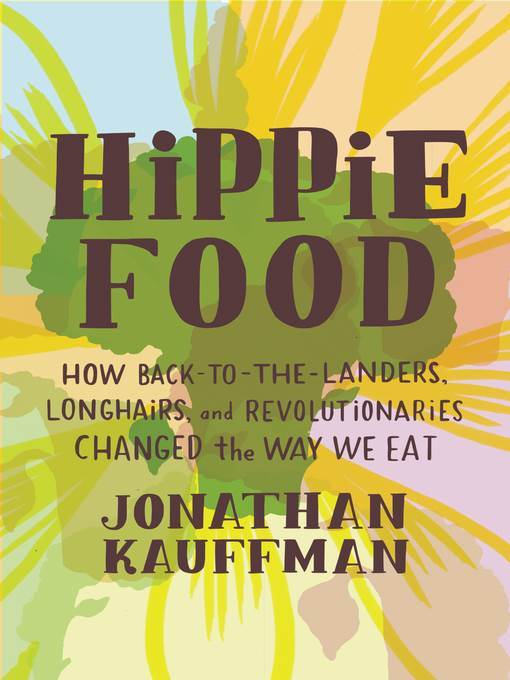
Hippie Food
How Back-to-the-Landers, Longhairs, and Revolutionaries Changed the Way We Eat
کتاب های مرتبط
- اطلاعات
- نقد و بررسی
- دیدگاه کاربران
نقد و بررسی

September 1, 2017
A gastronomic study of the gradual integration of organic food choices into public consumption.San Francisco Chronicle James Beard Award-winning food journalist Kauffman, who worked as a line cook, gives overdue credit to an organic agricultural movement whose popularity spread like wildfire in the 1970s. He digs deeply into the evolution of the hippie counterculture and how particular foods became staples and how they were included on dinner tables across the world. Raised in the 1970s in an "ultraliberal" Mennonite community, the author writes that his family's diet changed forever with the incorporation of the "earthy, fresh, and none too complex" foods featured in a 1976 copy of home economist Doris Janzen Longacre's More-With-Less Cookbook. This ideal entails stripping cuisine "back to its preindustrial roots," without pesticides, packaging, additives, or processing and devoid of meat. Kauffman tackles this subject journalistically, with interviews and commentary from the chefs and food co-op employees who became part of a larger movement to change the direction of the global diet while remaining mindful of its ecological footprint. He shows how formerly "fringe" foods like alfalfa sprouts, tofu, granola, carob, brown rice, and whole-wheat breads were popularized by the Southern California health-food and vitamin scene in the 1960s, as well as the "exotic" macrobiotic and whole food diets that proliferated in places like the Haight-Ashbury district in San Francisco. Moving forward, the author further analyzes the ways these naturally sourced foods developed into a distinctive cuisine touting both eco-friendly and mind-body benefits, and he documents the nationwide natural food revolution through the voices of organic farmers, homesteaders, and innovative vegetarian cooks. In an intelligently written narrative refreshingly free of personal admonitions or detractions, Kauffman comprehensively presents the history and the momentum of the organic food revolution while foraging for the keys to its increasing desirability and crossover appeal. An astute, highly informative food expose that educates without bias, leaving the culinary decision-making to readers.
COPYRIGHT(2017) Kirkus Reviews, ALL RIGHTS RESERVED.

Starred review from October 16, 2017
In this informative, briskly paced first book, James Beard Award–winning food writer Kauffman details how the concept of health food “evolved in the kitchens of young baby boomers” during the late 1960s counterculture and then in the post-Vietnam age. “Counterculture adherents,” he writes, “turned their efforts away from protest and created institutions, businesses, and cookbooks that brought the food movement to a much broader audience.” Kauffman explains that many of the staples of what is considered today to be a healthy diet—whole-grain bread, low-fat yogurt, organic or pesticide-free fruits and vegetables—had once been associated with fringe movements and have always been available to consumers. He interviews dozens of influential people within the healthy food movement, including the owners of the Aware Inn on the Sunset Strip, one of the earliest health food restaurants in the late 1950s; the editors of Zen Macrobiotics, which popularized the use of brown rice; and Frances Moore Lappé, author of Diet for a Small Planet, which introduced soybeans and tofu to American tables. Kauffman is equally thorough in tracing how these early innovators inspired the food co-ops and whole food stores that exist today, as well as how, during the 1980s and 1990s, mainstream supermarkets across the country added natural food sections to sell what was dismissed as “hippie food” in the 1960s. This is an outstanding food and cultural history. Agent: Nicole Tourtelot, DeFiore and Co.

November 15, 2017
This debut by journalist Kauffman is a rambling and ranging social history that explores the intersecting paths by which, collectively, natural and organic foods have entered contemporary American food culture. With a more topical than chronological arrangement, each chapter is its own minihistory: the ascendancy of macrobiotics, whole grains, or tofu; the growth of communes, organic farms, and farmers' markets; the influence of world cuisines; and the cooperative movement. Kauffman introduces readers to dozens of influential individuals and establishments: protohealth food restaurant The Health Hut, food store and distributor Erewhon, Rodale Press, the New Riverside Cafe, MN, The Farm, TN, and the Wheatville Food Co-op, Austin. Mostly limited to the late 1950s through the mid-1970s, with occasional forays back in time, the narrative effectively ends with the opening of the first Whole Foods in 1980. Kauffman documents his subjects' nutritional, environmental, economic, and philosophical arguments but seems more interested in chronicling than persuading, though he does submit that this array of outsider growers, cooks, seekers, and advocates have collectively had a profound impact on the American diet. VERDICT Recommended for general readers curious about foodways.--Janet Ingraham Dwyer, State Lib. of Ohio, Columbus
Copyright 2017 Library Journal, LLC Used with permission.

























دیدگاه کاربران